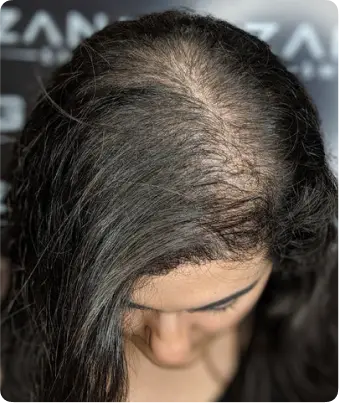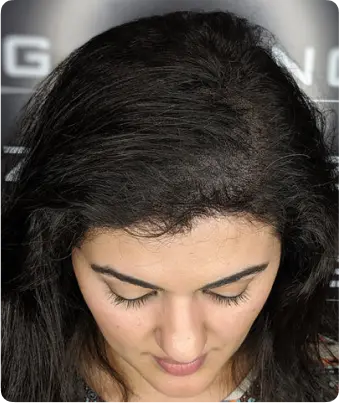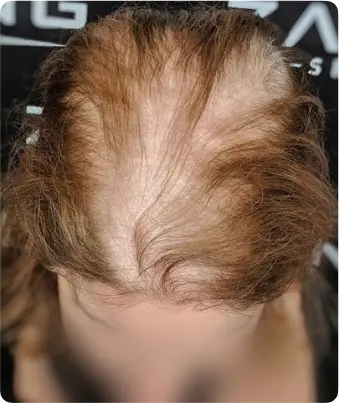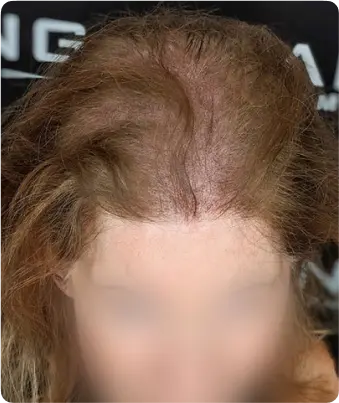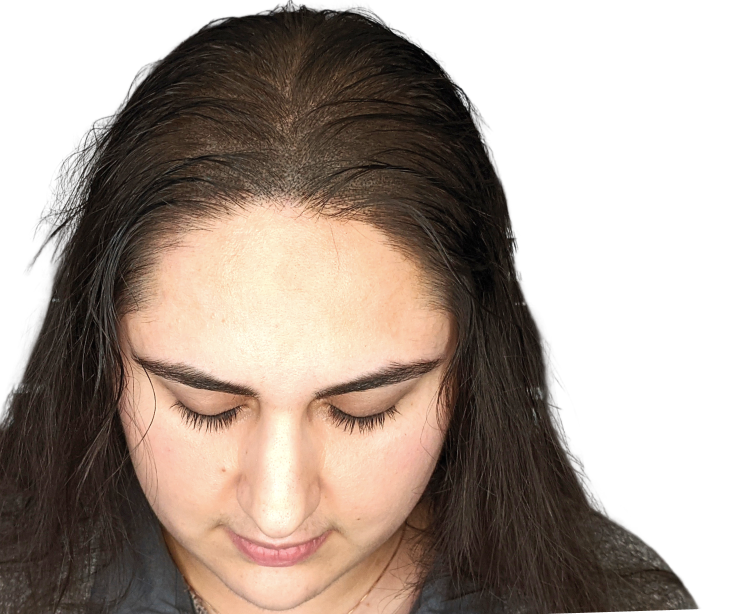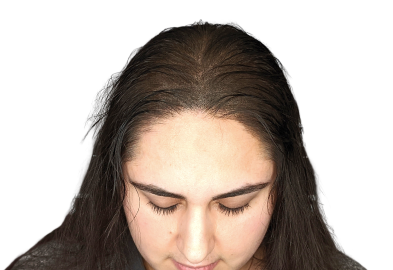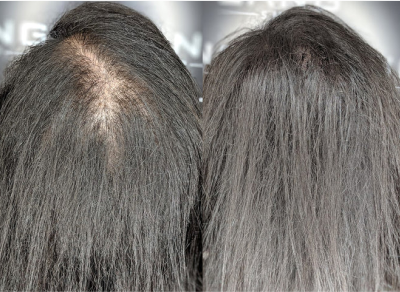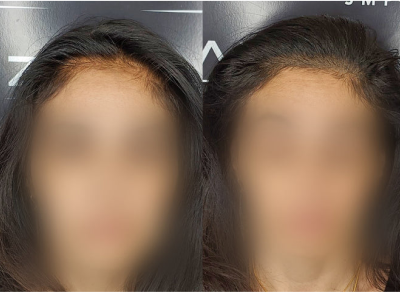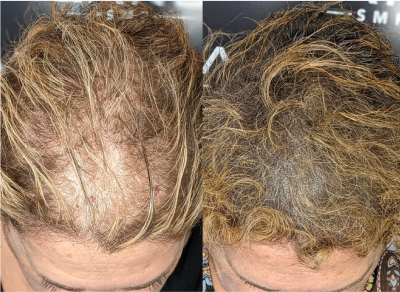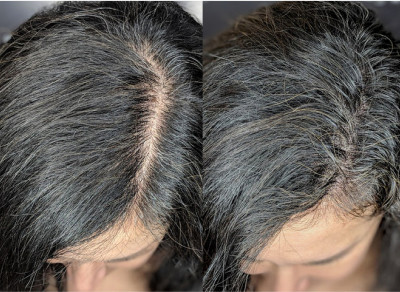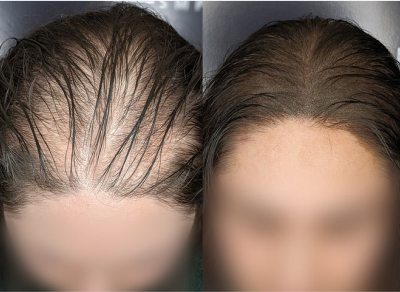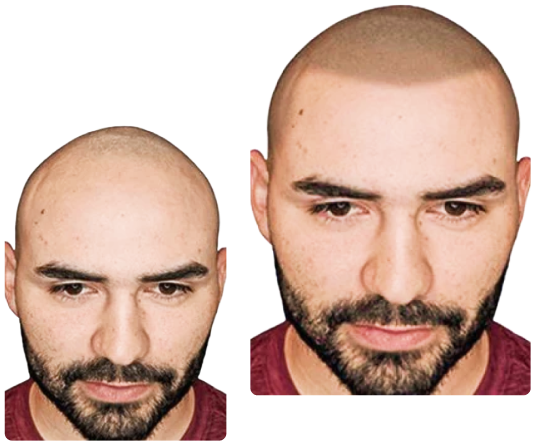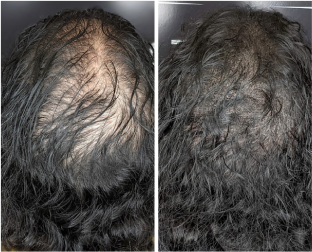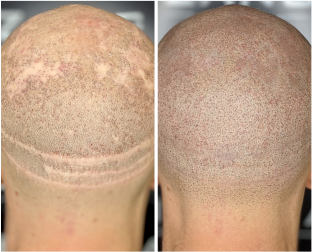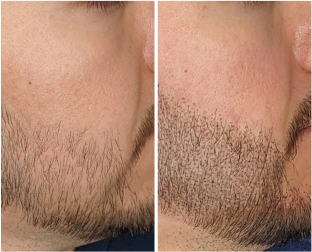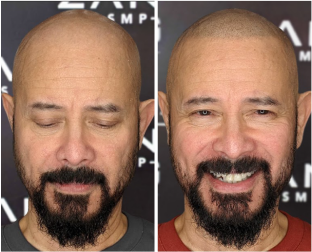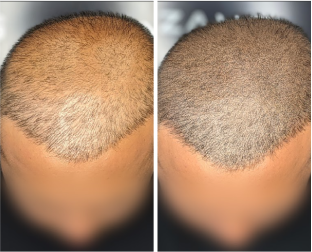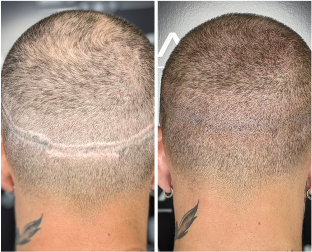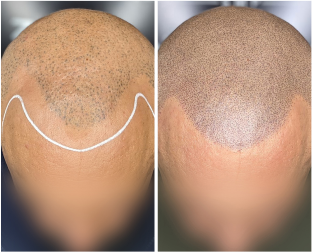Stages of Female Hair Loss
The Ludwig scale is the standard for assessing female pattern hair loss. Stage 1 starts with mild thinning along the part line.
In Stage 2, the scalp becomes increasingly visible in the central region. Stage 3 represents severe thinning across the scalp. Additionally, traction alopecia, often caused by tight braids, leads to permanent hair loss at the hairline.
Treatment For Female Pattern Hair Loss: Scalp Micropigmentation
Scalp Micropigmentation (SMP) is an innovative, non-surgical approach to combat female pattern baldness. By implanting organic, plant-based pigments into the scalp, SMP creates the illusion of natural hair follicles, delivering results without downtime.
Zang SMP specializes in achieving realistic results that transform your look. The pigments replicate real follicles, helping cover bald spots and improve hair density without requiring surgery.
The process usually involves two to three sessions. The first two treatments occur a week apart, focusing on areas of thinning. If necessary, a third session can be performed one to three months later to enhance and perfect the results.
Would a Hair Transplant Treat Hair Loss?
For most cases of male and female pattern hair loss, hair transplants are not the most suitable option. Donor grafts are necessary for success, but these are often unavailable when hair thinning covers the entire scalp.
Additionally, introducing hair grafts near existing follicles may cause unintended damage, potentially reducing overall hair density.
Scalp micropigmentation (SMP) is a revolutionary, non-surgical solution that creates the illusion of dense, natural-looking hair. It eliminates risks like follicle damage, requires no surgery, and delivers instant, lasting results.
At Zang SMP, we are industry leaders in scalp micropigmentation. With an experienced and highly skilled team, we provide unmatched quality and natural transformations to restore your confidence.

